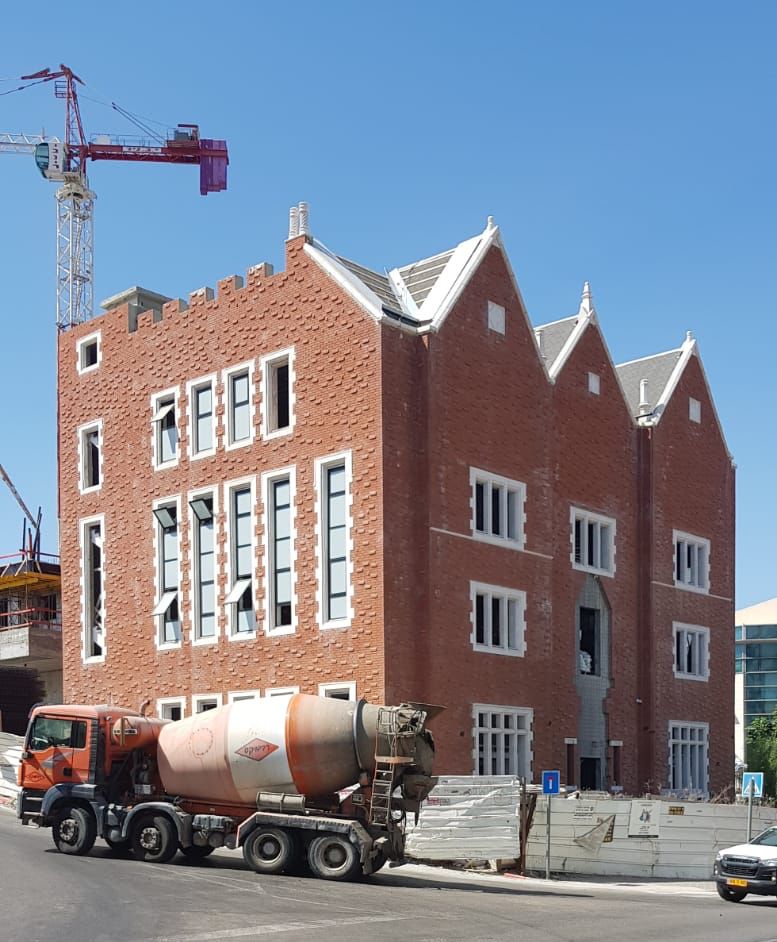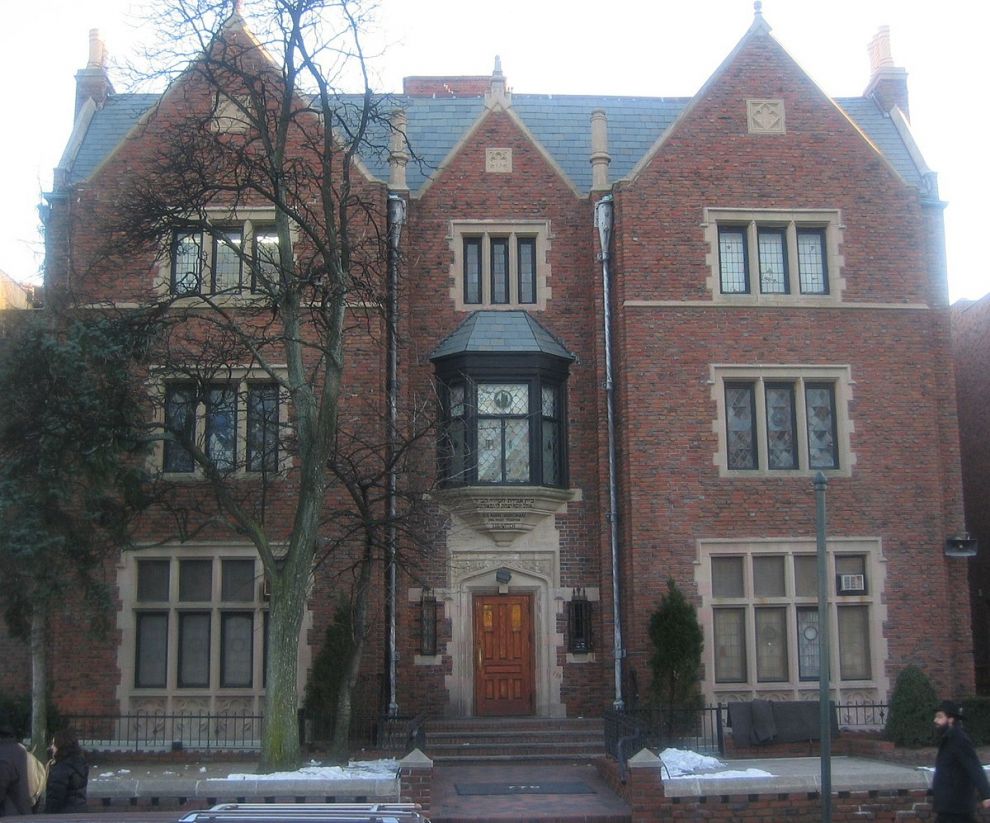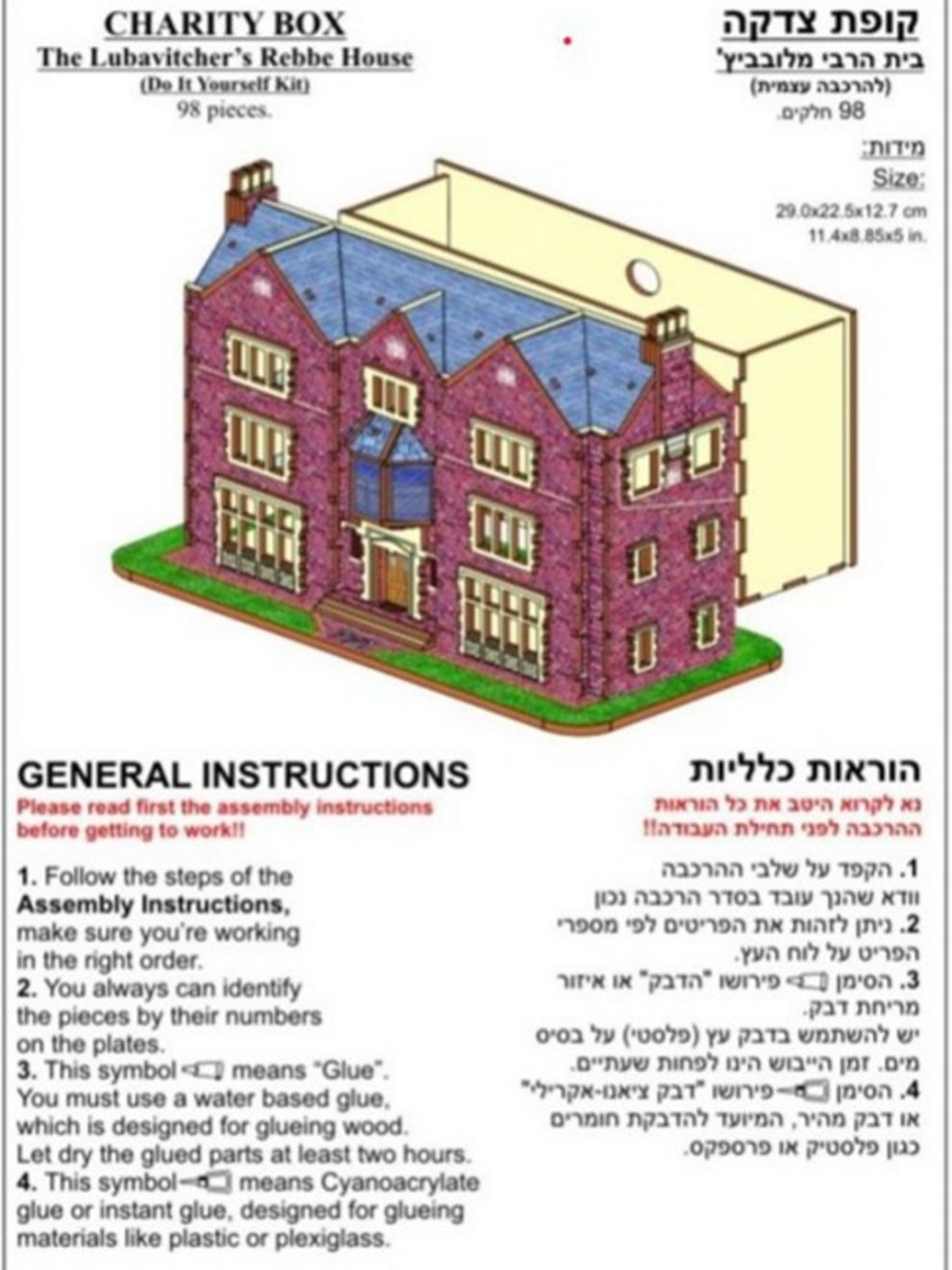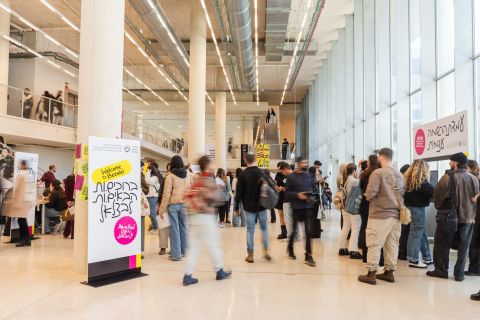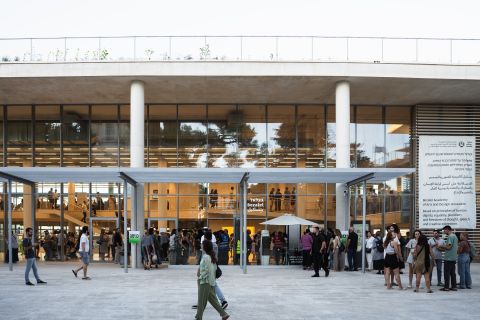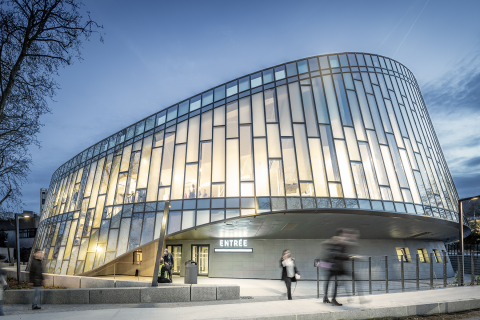Bezalel News
חדשות בצלאל
أخبار بتسلئيل
Copying Permitted - Between the House of the Lubavitcher Rebbe in Rishon LeZion and the Eiffel Tower in Las Vegas
Ran Shimoni's article in the Haaretz newspaper (August 9, 2022) opens: “The Replica of the Lubavitcher Rebbe's house near the healthcare clinic ... isn’t making everyone happy". The article revolves around a building that is being constructed in Rishon LeZion nowadays, and the article addresses the heated discussion currently taking place in the city regarding religionization, religious take over and "attempts to proselytize".
The building that emerged in the sands of the fourth largest city in Israel, is a replica of the building in the Crown Heights, Brooklyn neighborhood of New York. This building served as the Torah seminary (and at one point also the residence) of the Rabbi of Lubavitch (Rabbi Menachem Mendel Schneerson) and today functions as Chabad’s world headquarters. The red bricked house known as “770” (Seven Seventy), is named after the house number on Eastern Parkway, and is very similar to other houses in the heart of the New York suburb in which it is located.
Through the years, “770” has been replicated over forty times. Beyond the daily use that the Chabad members make of them, they function as a symbol of loyalty and belief in the Rabbi and his teachings. The most important (and precise) among the replicas, was built in 1986, in Kfar Chabad, by order of the Rabbi himself, and includes among other things, a copy of his meeting room. The purpose was that this house will function as a substitute for those who, for various reasons, cannot reach the New York “770” (from the official website of Kfar Chabad). The red bricks, imitating the brownstone bricks, were produced in the Ofakim Terracotta factory. The turrets, the chimneys, the prominent balcony, the windows, the stair railings and the lamps look exactly like those in the original. My heart is in the West but I am at the edge of the East.
This isn’t the only replica of the Rabbi’s house in Israel. You can find replicas of the façade (also often replicated on the sides of buildings), in the Ramat Shlomo neighborhood of Jerusalem, in Mitzpe Ramon, in Sderot, in Kiryat Ata, in Migdal HaEmek, in Zikhron Yaakov as well as other places. Buildings in other countries were not neglected. Milan, Moscow, Los Angeles, Sao Paulo (Brazil), Buenos Aires and Melbourne also got a building whose façade (at a minimum) copies the façade of the Rebbe’s house. This is a partial list which most likely is still growing.
But comparing the pictures shows that ‘Replica’ is a flexible term. In Jerusalem for instance, the façade was replicated so that it can be seen both from the front and from the back. In Sderot, they used an existing building, and covered it with a façade simulating only the front of the Brooklyn house, and in Kiryat Ata the building received a slightly different version of the windows.
As far as architectural replicas are concerned, what appears an uninspiring or even despised entity, is not necessarily a uniform concept. Each case, should be considered within a broad range of concepts and questions regarding the tensions between what’s allowed and what is not, between the ethical and the legal, between imitation and inspiration, between appropriation and forgery, between admiration (and perhaps even a form of groveling) and condescension, between relating to the past and the relationship to the ‘Other’, between authenticity and kitsch and between a loyalty to the original and a simulacrum. And of course, it begs the question to what extent the illusion substitutes for the “real thing”. Furthermore, it cannot be ignored that architecture is not summed up in the building alone but rather, one must take into account the physical space (the street, the neighborhood, the city, etc.), the population, the local culture with its various traditions, and finally the exact function of each of the replicas. Does the superficial visual resemblance seep into the “user experience” as well? Brooklyn isn’t Kfar Chabad, and Kfar Chabad, isn’t Mordechai Yoel Segal Street in Rishon LeZion, not to mention Via Poerio in Milan.
In this context it is enough to mention the Eiffel Tower and the Empire State Building that grew in the Las Vegas strip, or the neighborhoods and towns of post-communist China which are strictly replicas of buildings, monuments, streets, squares, neighborhoods and even entire towns from ‘"Classic" Europe. Just as a full understanding of the Las Vegas replicas requires familiarity with the American culture, a full understanding of the Chinese system of replication requires familiarity with Chinese culture through the ages. In some aspects, what we see in the case of "770" is different, not to say unusual, since the owner of the original work is the one who requested the replicas. Therefore, this case requires a discussion of how the replicas reflect the foundations of the Chabad Hassidic ideology; on one hand concerning its relationship to the place which they long for, and on the other hand, the places where their emissaries go.
And we haven’t yet mentioned, the smaller models of the “real thing”. The Hassidim encourage putting charity boxes in their homes, which are shaped like the Brooklyn house, and their children are invited to jump and slide on inflatable versions of the house. Here too is a broad phenomenon that calls for an in-depth discussion of the essence of the smaller scaled models on the one hand, and the role of "souvenirs" as something that carries the spirit of a "sacred" body on the other hand. Not to mention those who carry on a complex relationship within this reality.
Read more in the department’s magazine
Dr. Naomi Meiri-Dan
Lecturer in the Department of Visual and Material Culture
